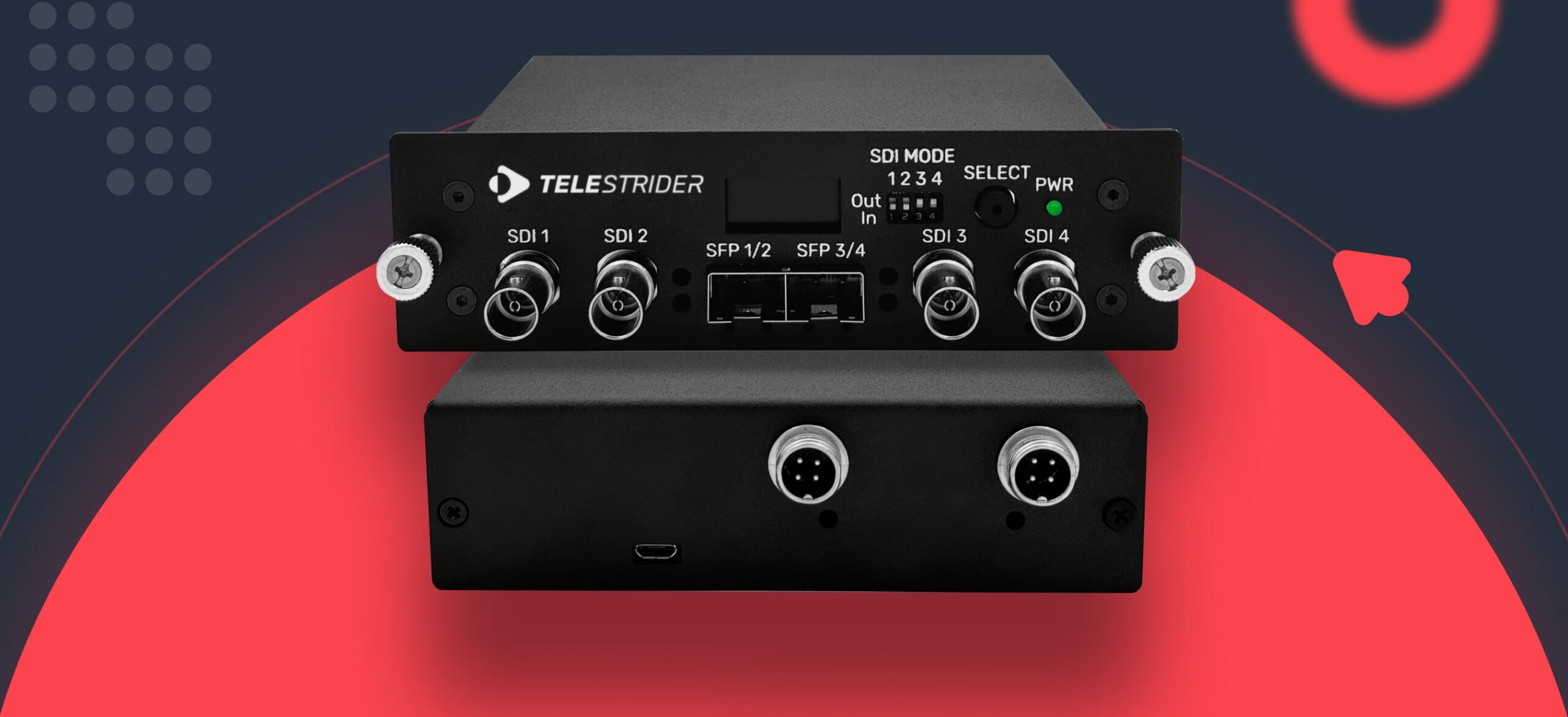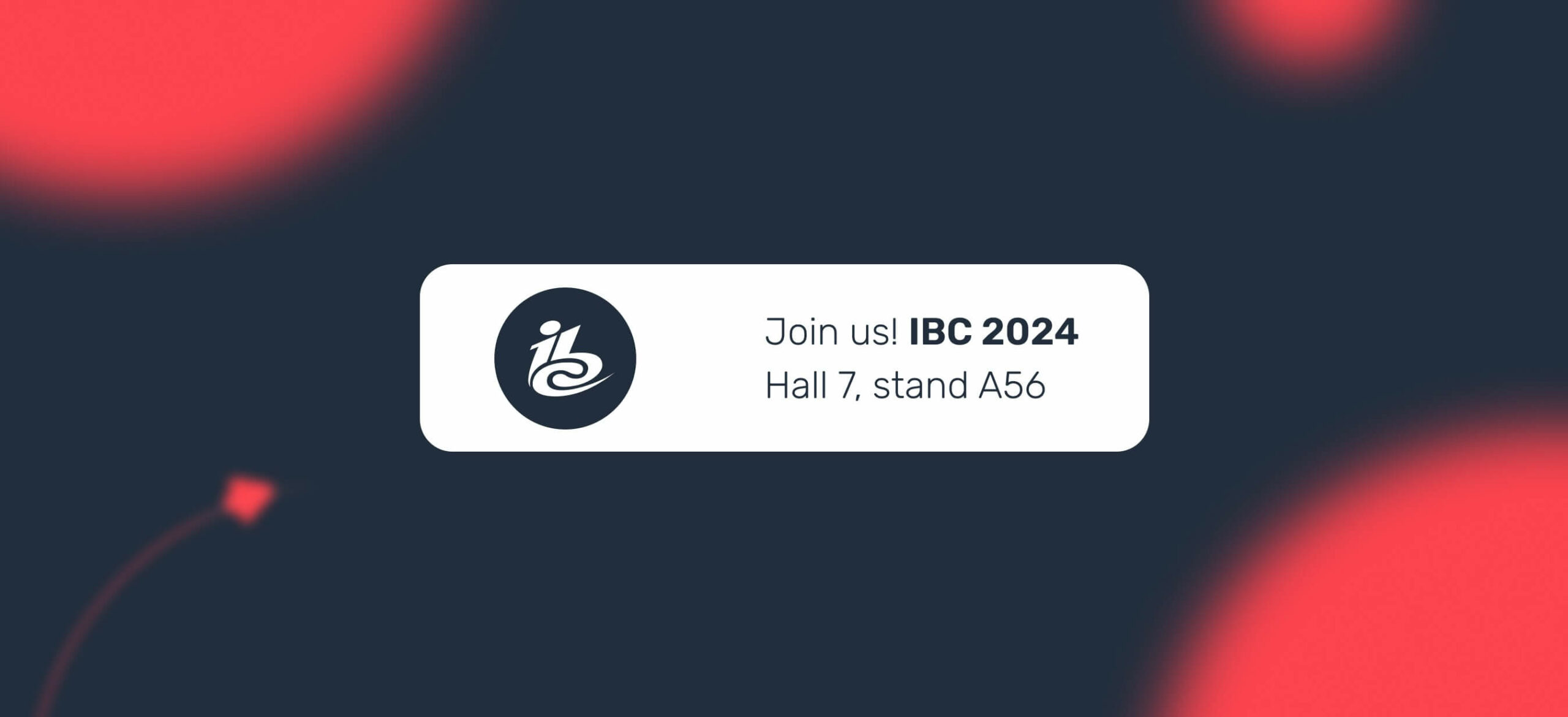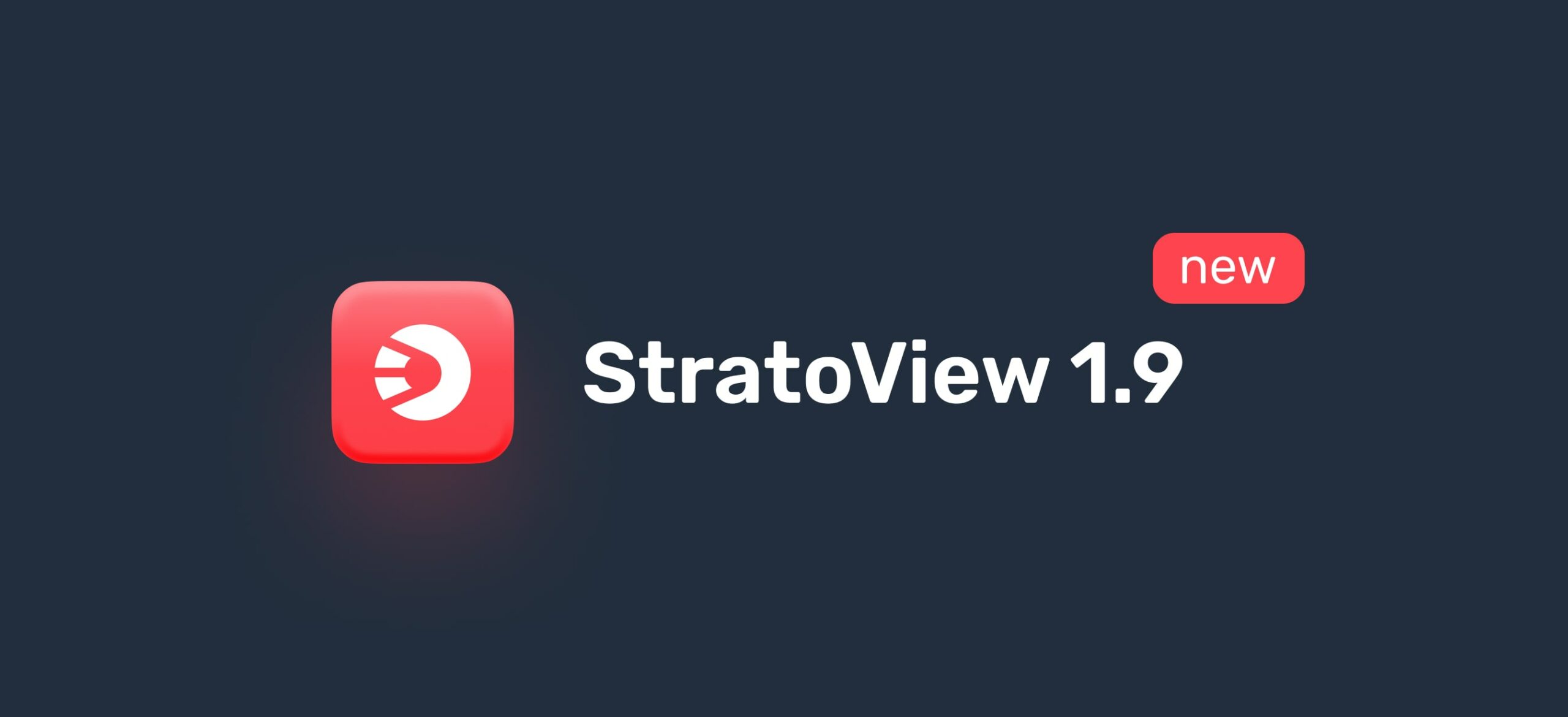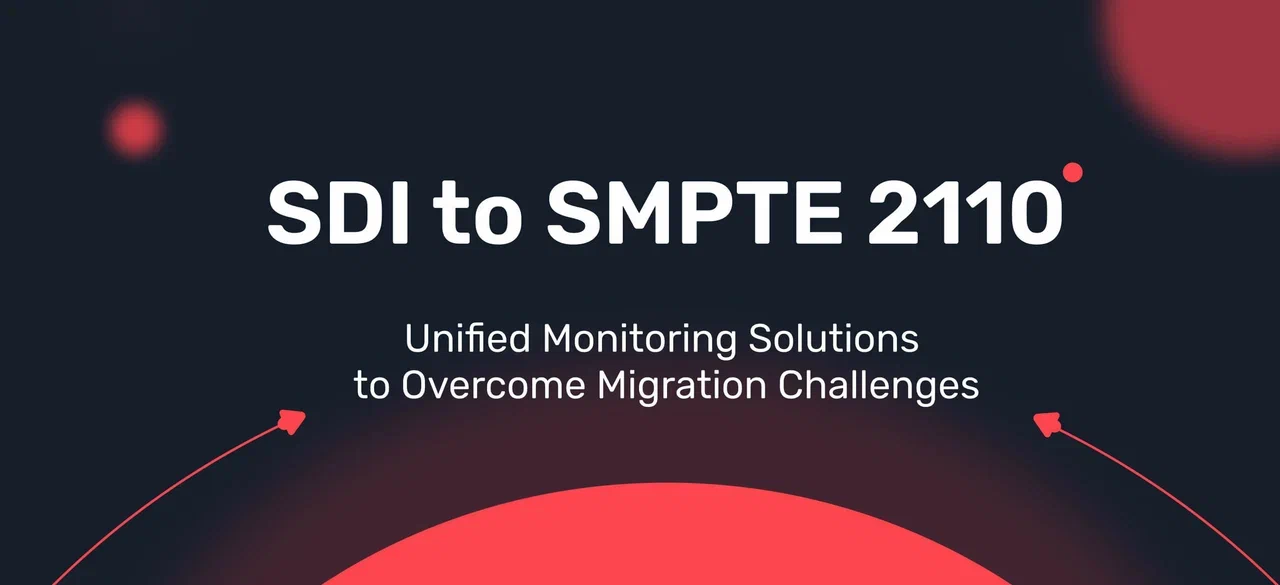
In today’s evolving broadcast operator environments, where mixed signals and various generations of equipment are used, broadcast system management and overall video network monitoring are becoming increasingly complex tasks. We at Telestrider offer you a single solution that will help you effectively manage your network and ensure a high level of reliability and quality of services.
One of the key challenges faced by operators is the transition from legacy SDI-based equipment to new IP based technologies such as SMPTE 2110. A new approach is needed to smooth out the production cycle upgrade, allowing you to retain existing SDI-based equipment and gradually add SMPTE 2110 signals without radically changing the processes and infrastructure. Managing and supporting uncompressed streams, including SMPTE 2110, SMPTE 2022-6, MPEG-TS and others, becomes paramount. StratoView makes it easy to monitor all signals in your network regardless of the type.
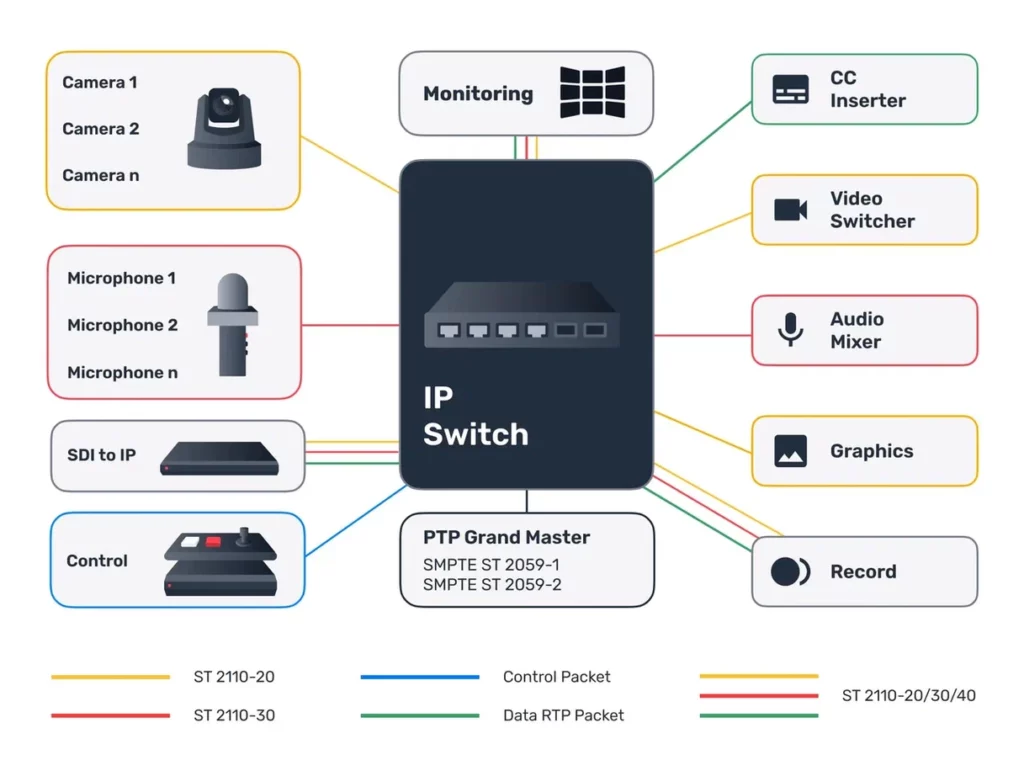
SDI and SMPTE 2110 signals in parallel going left to right through SDI switches and IP routers
StratoView is a modular and highly flexible monitoring solution, providing software and hardware modules capable of monitoring and analyzing any sources and signals anywhere in your operator network. All information from these modules is collected and aggregated in one place at a central location (aggregation server), which allows you to get a complete picture of your system and its status. This acts as a distribution point as well to disseminate all network statuses and information to anywhere needed. When issues arise StratoView detects them quickly, allowing you to predict and prevent serious network downtime.
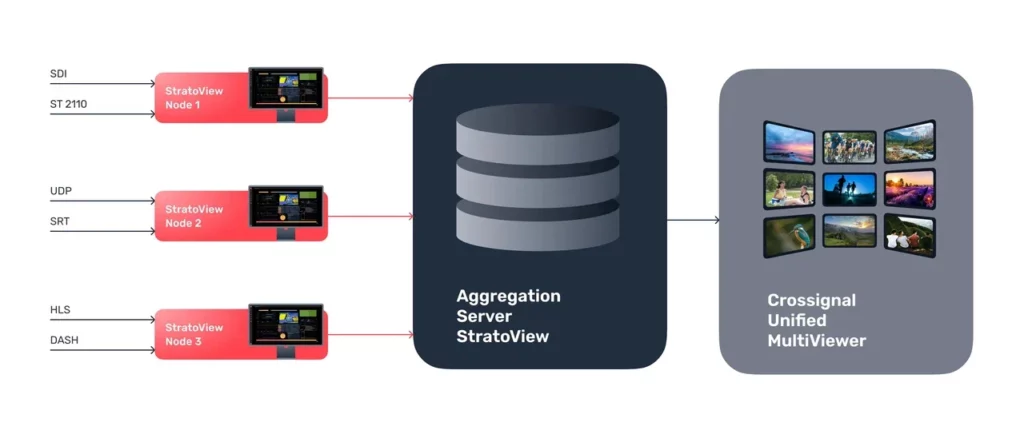
System architecture modules, aggregation server, output
With the ever-growing complexity of Video networks and with the large mix of multi-generational equipment being used, operators are using multiple monitoring systems in their broadcast networks to control and monitor all this gear. Many large operators even have different teams responsible for different equipment in the video network. The video engineers manage the video network while the servers, pc’s and networking gear are monitored by the IT department. This creates issues when troubleshooting a video channel down situation by trying to identify whether the fault is due to IT equipment such as routers or switches or due to an encoder or multiplexor failure. Multiple monitoring systems need to be consulted and different teams need to be engaged to work on the issue.
We have for many years been dealing with this scenario with our video monitoring system and understand the drawbacks. That is why when designing StratoView, we architected third party device and equipment monitoring as a core functionality of the system. This was not an after though that was added ad hoc. This was part of our vision of providing a unified monitoring platform that can provide an umbrella view of your video network and provide you the tools and ability to troubleshoot every piece of equipment from a single place.
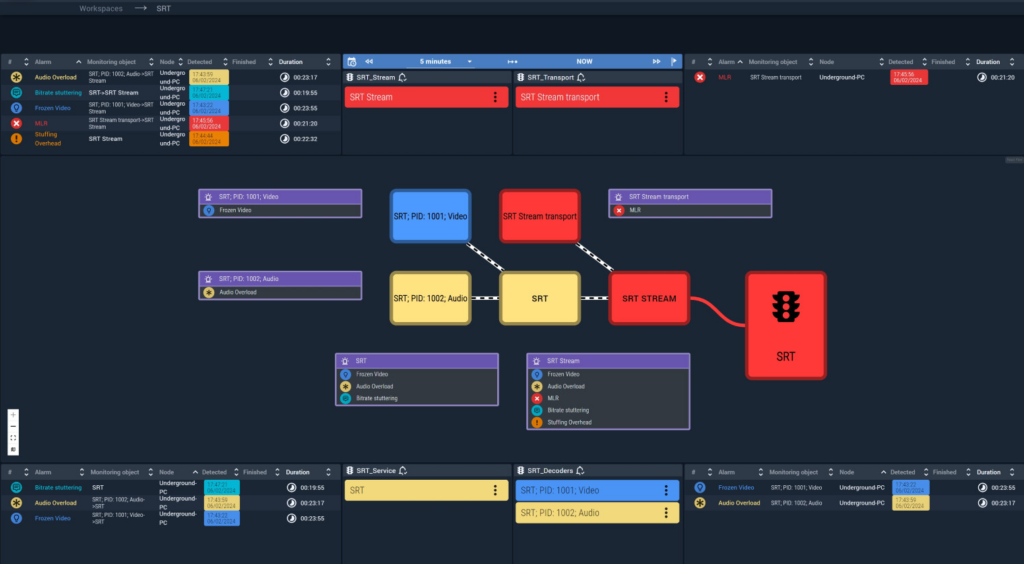
Sample graphic design of the graphic service
The advantages that operators gain are speed in issue identification and almost immediate root cause analysis of any fault in the network. Our system combines different control systems, giving you a single view and understanding of the state of your network.
Video streams and channels originate with specialized video equipment such as IRD’s and encoders, yet in between and in many places along the video path are switches, routers, and even virtual private networks. Monitoring the video path is what we do best, and we are able to monitor ANY device in the path. This is very effective.
StratoView is very flexible and allows third party device monitoring through various means such as SNMP, API calls or customized scripts. The system provides you with the ability to make your own custom modules and scripts to monitor any device and customize it to your needs. This allows you to customize the system to your unique needs and expand its functionality. We also can provide as a service, development and integration of these modules and scripts if necessary.
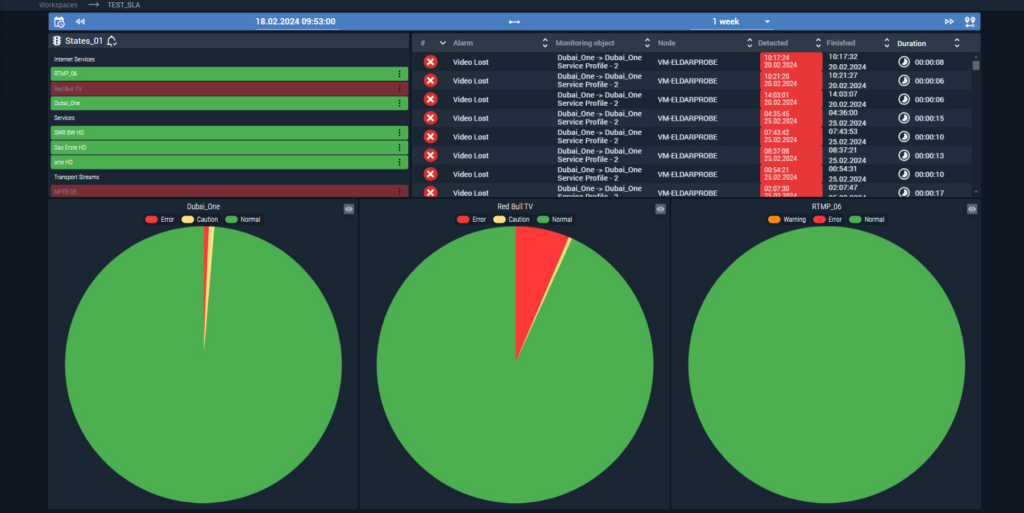
Example of SLA’s pie charts in StratoView system
At the end of the day network downtime translates directly to lost revenue. Maintaining system uptime and reliability is key to maximizing profits. Also, many operators today resell services and capacity thus accurate reporting of network uptime translates into more accurate revenues. StratoView provides extensive reporting on network uptime and availability through very accurate SLA calculations and reports. Used wisely this can translate into more profits for operators reselling and guarantying SLA’s at different tiers, hence generating new sources of revenue.
With StratoView you will be able to effectively control your network, maintain mixed signals and equipment while provide the high-quality services to your customers.
The transition from SDI infrastructure to IP is a significant technical and organizational task for telecom operators and television operators. Here are some of the main problems they face:
1. Investment in new equipment: The transition to IP requires significant investment in new equipment such as routers, switches and servers. This can be financially burdensome, especially if they already have significant investments in the existing SDI infrastructure.
2. Compatibility of existing equipment: In many cases, companies have existing SDI-based equipment that they want to retain and use with new IP solutions. Ensuring compatibility and integration between SDI and IP can be a complex task that requires additional effort and resources.
3. Mixed infrastructure management: During the transition period, when companies use both SDI and IP, there is a need to manage and monitor both types of infrastructure. This can create difficulties in management and require two different management systems, which can be inefficient and costly.
4. The need for staff training: The transition to a new technology requires staff training so that they can work effectively with new equipment and understand the features of IP protocols and networks. This may require time and resources to educate and train staff.
5. Security and data protection: The transition to IP also brings new challenges in the field of security and data protection. IP networks are more vulnerable to cyberattacks and require additional security measures to protect confidential information and prevent unauthorized access.
6. Integration with other systems: In many cases, telecom operators and television companies have different systems and applications that need to be integrated with the new IP infrastructure. This may require the development and configuration of special solutions to ensure collaboration and data exchange between different systems.
All these issues require careful planning, resources, and expertise for a successful transition from SDI to IP. However, with the right approach and monitoring system, operators can cope with these challenges and ensure an effective and reliable transition.
By Sergey Lakham
President, Telestrider





